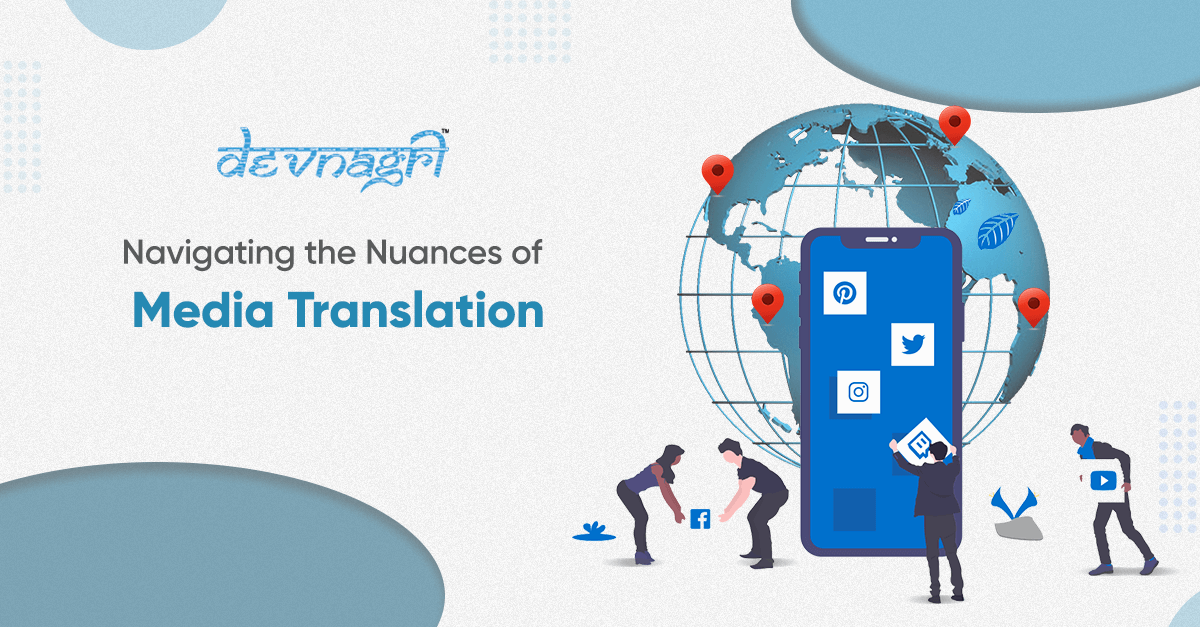
In our increasingly interconnected world, media plays a pivotal role in shaping our understanding of different cultures, ideologies, and perspectives. However, the effectiveness of media in reaching diverse audiences hinges greatly on the accuracy and cultural sensitivity of translation. Media translation, whether it’s subtitling films, dubbing TV shows, or translating news articles, serves as a vital bridge between languages and cultures, allowing content to resonate with audiences worldwide. In this blog, we delve into the intricacies of media translation, exploring its challenges, strategies, and importance in fostering cross-cultural communication.
Also Read: The Power of eLearning Translation: Bridging Gaps and Expanding Horizons
The Complexity of Media Translation
Media translation goes beyond mere linguistic conversion; it involves adapting content to suit the cultural norms, linguistic nuances, and sensibilities of the target audience. This complexity becomes apparent in various forms of media, each presenting unique challenges for translators:
Also Read: Unlocking Global Audiences with a Website Translator
Subtitling: Subtitling requires succinctness and timing, as translators must condense dialogue to fit within limited screen space while ensuring it remains faithful to the original meaning. Additionally, cultural references and wordplay often pose challenges in conveying intended messages accurately.
Also Read: Enhancing Your Reach and Impact: The Importance of Website Translation
Dubbing: Dubbing involves replacing original audio with translated dialogue. Achieving lip-sync and preserving the actors’ vocal nuances while maintaining coherence with the visuals demand meticulous attention to detail. Moreover, the translated script must match the original lip movements and cultural context seamlessly.
Also Read: The Crucial Role of Finance Translation: Bridging Global Markets
News Translation: News articles often contain complex terminology, cultural references, and political nuances that necessitate precise translation. Maintaining impartiality and accurately conveying the intended tone and context are paramount in news translation to ensure the audience receives reliable information.
Also Read: Breaking Language Barriers: The Power of Website Translators
Strategies for Effective Media Translation
To surmount the challenges posed by media translation, translators employ various strategies to preserve the integrity and impact of the original content:
Cultural Adaptation: Translators must possess cultural competency to adapt content in a way that resonates with the target audience while remaining faithful to the source material. This involves replacing culturally specific references with equivalents familiar to the target audience without compromising the intended message.
Also Read: Unlocking Global Gaming: The Significance of DOTA Website Translation
Transcreation: In cases where literal translation may not capture the essence of the content, transcreation allows translators to creatively adapt the message while retaining its original intent. This approach is often employed in marketing materials, slogans, and creative works to evoke the desired emotional response from the audience.
Also Read: Navigating the Complex World of Finance Translation
Collaboration: Collaboration between translators, linguists, and subject matter experts facilitates accurate translation by leveraging their collective expertise. Regular communication and feedback loops ensure consistency, accuracy, and cultural relevance throughout the translation process.
Also Read: The use of Website Translation in Banking Industry
The Importance of Accurate Media Translation
Accurate media translation holds significant implications for global communication, fostering mutual understanding, and bridging cultural divides. Here are some reasons why it is crucial:
Cultural Exchange: Media serves as a window into different cultures, allowing audiences to gain insights into diverse perspectives, traditions, and values. Accurate translation enables this exchange by making content accessible to audiences worldwide, promoting cultural appreciation and empathy.
Also Read: How can Document Translation help you expand your Business?
Information Accessibility: In an era of globalization, access to information transcends linguistic barriers. Accurate translation of news, educational materials, and scientific research democratizes knowledge, empowering individuals from diverse linguistic backgrounds to stay informed and engaged.
Also Read: Is your business growth restricted due to linguistic barriers?
Enhanced Entertainment Experience: Whether it’s enjoying foreign films or binge-watching international TV series, accurate media translation enhances the entertainment experience by preserving the original nuances, humor, and emotions. It enables audiences to immerse themselves fully in the narrative, irrespective of language differences.
Also Read: How can the Translation API be beneficial for your business?
Conclusion
Media translation serves as a powerful catalyst for cross-cultural communication, enabling the global dissemination of ideas, stories, and perspectives. By navigating the complexities of language and culture, translators play a pivotal role in bridging divides and fostering mutual understanding in our interconnected world. As we continue to consume media from diverse sources, let us recognize and appreciate the invaluable role of translation in shaping our collective cultural landscape.





